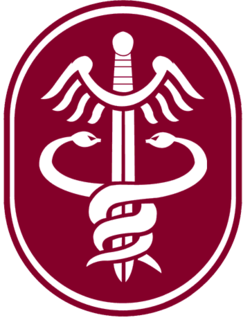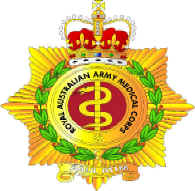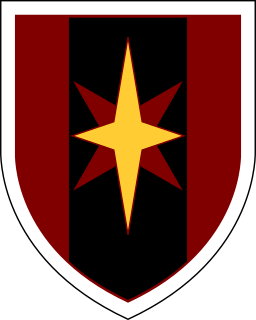History
The mission of the 10th Field Hospital was to provide hospitalization support to U.S. Forces within the theater of operation in support of combat operations or operations other than war. The 10th Field Hospital provided medical support for the Fort Carson Community, operated two troop medical clinics, provided support personnel to Evans Army Community Hospital, supported EMT course, conducted combat lifesaver courses and preventive medicine courses, and conducted the installation's Expert Field Medical Badge test.
The 10th Field Hospital was a modular-designed facility, which consisted of a HUB (Hospital Unit Base) and HUS (Hospital Unit Surgical). The unit had 8 wards providing intensive nursing care for up to 96 patients, 7 wards providing intermediate nursing care for up to 140 patients, one ward providing neuropsychiatric (NP) care for up to 20 patients. Surgical capacity was based on 8 operating room tables for a surgical capacity of 144 operating room (OR) table hours per day. The unit could be further augmented with specialty surgical/medical teams to increase its capabilities.
The hospital was equipped with Deployable Medical System (DEPMEDS) equipment, which could be set up in various configurations. The major components of a combat support hospital were the expandable tactical shelters, TEMPER Tents, and the military vans. The expandable tactical shelter was a rigid paneled metal unit that could be unfolded to become an enclosed air conditioned shelter for use as an operating room, central material services, pharmacy, laboratory, blood bank, radiology, or biomedical maintenance. The TEMPER (Tent Extendible Modular Personnel) tent featured an aluminum frame and fabric outer skin, which could be quickly assembled and disassembled without, tools. The standard ward was 20 feet by 64 feet, consisting of 8 8-by-20 foot TEMPER sections. The MILVAN was a rigid paneled metal storage and transportation container, which was allocated to the functional sections of the hospital. When operational, the combat support hospital could provide climate and environmental control equivalent to that found in any fixed hospital.
In January 2004, the 10th Field Hospital became the first hospital to complete the Medical Re-engineering Initiative (MRI) conversion. With the conversion, the 10th Field Hospital was a more mobile 84-bed hospital with an additional 164 beds in storage, if ever needed. The combat support hospital was designed to provide level III care to deployed soldiers during wartime operations or humanitarian missions. The hospital facility was the Deployable Medical System (DEPMEDS), which consisted of TEMPER tents and ISO shelters. It was composed of an emergency medical treatment section with a dispensary, one operating room (with 2 tables), 2 intensive care units (ICU) each composed of 12 beds, 3 intermediate care wards (ICW) each composed of 20 beds, one central materiel services section, laboratory with limited testing capabilities, blood bank, radiology with portable x-ray capability and digital processing, and a pharmacy. Experiences of the 10th Field Hospital had led it to request an additional OR iso-shelter to increase its surgical capabilities. Though the 10th Field Hospital was an echelon-above-division (EAD) asset, and therefore required support, with the MRI conversion it was more self-sufficient than before.
The staff of the hospital consisted of 2 personnel components: permanently assigned and professional fillers or PROFIS. Under the FY07 MTOE, which appeared on 16 March 2007, the 10th Combat Support Hospital had 482 required positions, which consisted of 237 permanently assigned and 245 PROFIS. With the MRI conversion, this represented a shift with the number of permanently assigned personnel decreasing and the number of PROFIS increasing by approximately 40 each respectively. The backbone of a fully operational and functional hospital was the competent staff found under the canvas. An important part of that competent team was the PROFIS staff, which made up over half of the total staff and included the majority of the clinical professionals.
In an ideal world, the 10th Field Hospital would have had all personnel assigned and training on a daily basis in anticipation for worldwide deployments. Unfortunately, that arrangement would become a detriment to the clinical skills of the medical, nursing, and specialty staff. Therefore, a system was required whereby the majority of time could be spent in a real clinical environment, where skills could be developed and maintained. That system, the PROFIS program, allowed clinical staff to maintain clinical proficiency while developing unit relationships and training for deployment with their designated PROFIS unit. Likened to a "break glass when needed" piece of equipment, PROFIS were assigned to the 10th Field Hospital on paper and were requested when the need arose for professionals to round out the staffing requirements for a particular mission.
Today, the 10th Field Hospital, on order, prepares for expeditionary deployment in order to provide Role III hospitalization, outpatient services, enhanced medical, surgical, laboratory and x-ray capabilities and provides sustainment support to hospital augmentation detachments in support of Unified Land Operations. The 148-bed Field Hospital consists of Headquarters and Headquarters Company (32-bed), 84th Hospital Augmentation Detachment (32-bed MED), 193rd Hospital Augmentation Detachment (60-bed ICW) and 534th Hospital Augmentation Detachment (24-bed SURG) The 10th FH is a force multiplier for the combatant commander, providing high quality, comprehensive role III medical care and health services in order to conserve the fighting strength". [2]




















